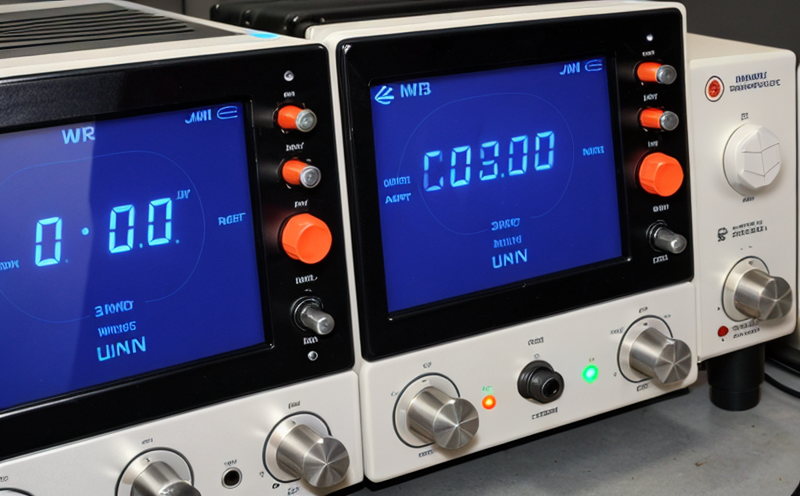FCC Part 68 Telecom Device RF Compliance Testing
The Federal Communications Commission (FCC) Part 68 rules govern telecommunications equipment that connects to the Public Switched Telephone Network (PSTN). This includes a wide range of devices such as modems, telephone sets, and other communication devices. Ensuring compliance with FCC Part 68 is crucial for manufacturers looking to bring their products to market in the United States.
Compliance testing involves evaluating the radio frequency (RF) emissions and performance characteristics of these devices to ensure they meet the specified limits set by the FCC. This testing ensures that devices do not interfere with other communication equipment, thereby maintaining a stable and efficient telecommunications network.
The test process typically includes several key steps: device preparation, emission measurement, power level verification, and interference analysis. Devices are subjected to rigorous testing in controlled environments, ensuring accurate results. The FCC recognizes the importance of these tests in protecting consumers from harmful emissions and ensuring that devices perform reliably.
For manufacturers, compliance with FCC Part 68 is mandatory before selling their products in the U.S. market. Non-compliance can result in fines, product recalls, and other legal consequences. Therefore, it's essential for companies to understand the requirements and engage an accredited laboratory that specializes in this type of testing.
The testing process involves several stages:
- Preparation: Ensuring all necessary documentation is available, including schematics and component lists.
- Emission Measurement: Using specialized equipment to measure RF emissions at various frequencies.
- Power Level Verification: Checking that the device's power levels are within acceptable limits.
- Interference Analysis: Assessing the potential for interference with other devices operating in the same frequency bands.
The results of these tests are then evaluated against FCC Part 68 requirements. Compliance is determined by comparing test data to specified limits and ensuring that no harmful emissions or interference occur. The laboratory will provide a detailed report, which can be submitted to the FCC for approval.
Understanding the complexities involved in compliance testing helps manufacturers streamline their product development process and avoid costly delays. By working with an experienced laboratory, companies can ensure their products meet all necessary requirements and are ready for market entry.
Applied Standards
The FCC Part 68 compliance testing is based on several standards that define the acceptable levels of RF emissions and interference. The primary standard used in this context is FCC Part 68, which outlines the specific requirements for telecommunications equipment.
Additionally, devices may need to comply with other relevant standards such as:
- IEC 61937-1: This standard specifies the construction and performance requirements for power-line communication (PLC) transceivers.
- EN 50082-1:2004: Defines the characteristics of low-voltage power lines and their environment, which is crucial for devices that operate over such lines.
The use of these standards ensures that testing meets international best practices and provides a consistent framework for evaluation. Compliance with these standards is essential to ensure that products meet global regulatory requirements and perform reliably in various environments.
Scope and Methodology
The scope of FCC Part 68 compliance testing primarily focuses on the RF emissions and performance characteristics of telecommunications devices. The methodology involves several key steps:
- Device Preparation: Ensuring all necessary documentation is available, including schematics and component lists.
- Emission Measurement: Using specialized equipment to measure RF emissions at various frequencies. This includes both continuous wave (CW) and modulated signals.
- Power Level Verification: Checking that the device's power levels are within acceptable limits, as specified in FCC Part 68.
- Interference Analysis: Assessing the potential for interference with other devices operating in the same frequency bands. This involves placing the device under test (DUT) in a controlled environment and monitoring its interaction with nearby equipment.
The testing process is conducted in accordance with international standards such as FCC Part 68, IEC 61937-1, and EN 50082-1:2004. The laboratory ensures that all tests are performed under controlled conditions to provide accurate results.
The testing environment is critical for achieving reliable test results. Laboratories use state-of-the-art equipment and facilities to ensure that the DUT is subjected to realistic operating conditions. This includes using sophisticated measurement instruments such as spectrum analyzers, network analyzers, and power meters. The laboratory also employs experienced engineers who are well-versed in RF testing procedures.
The results of these tests are evaluated against specified limits and compared with industry standards. Compliance is determined by comparing test data to the acceptable levels defined in FCC Part 68. The laboratory provides a detailed report, which can be submitted to the FCC for approval.
International Acceptance and Recognition
- FCC Certification: Compliance with FCC Part 68 is mandatory for devices intended for sale in the U.S. market. The FCC's certification process ensures that products meet all necessary requirements.
- CE Marking: Devices sold within the European Union must comply with the relevant directives, including those related to RF emissions and interference.
- UKCA Marking: For devices intended for sale in the United Kingdom, compliance with Part 68 is also necessary. The UK's conformity assessment procedures ensure that products meet all required standards.
- Australian Standard AS/CSA C22.2 No. 37: This standard outlines the requirements for telecommunications equipment intended for use in Australia.
Compliance with FCC Part 68 is widely recognized and accepted by regulatory bodies worldwide, making it a crucial step in ensuring global market access for telecommunications devices. Manufacturers who comply with these standards can avoid costly delays and ensure that their products are ready for market entry.





